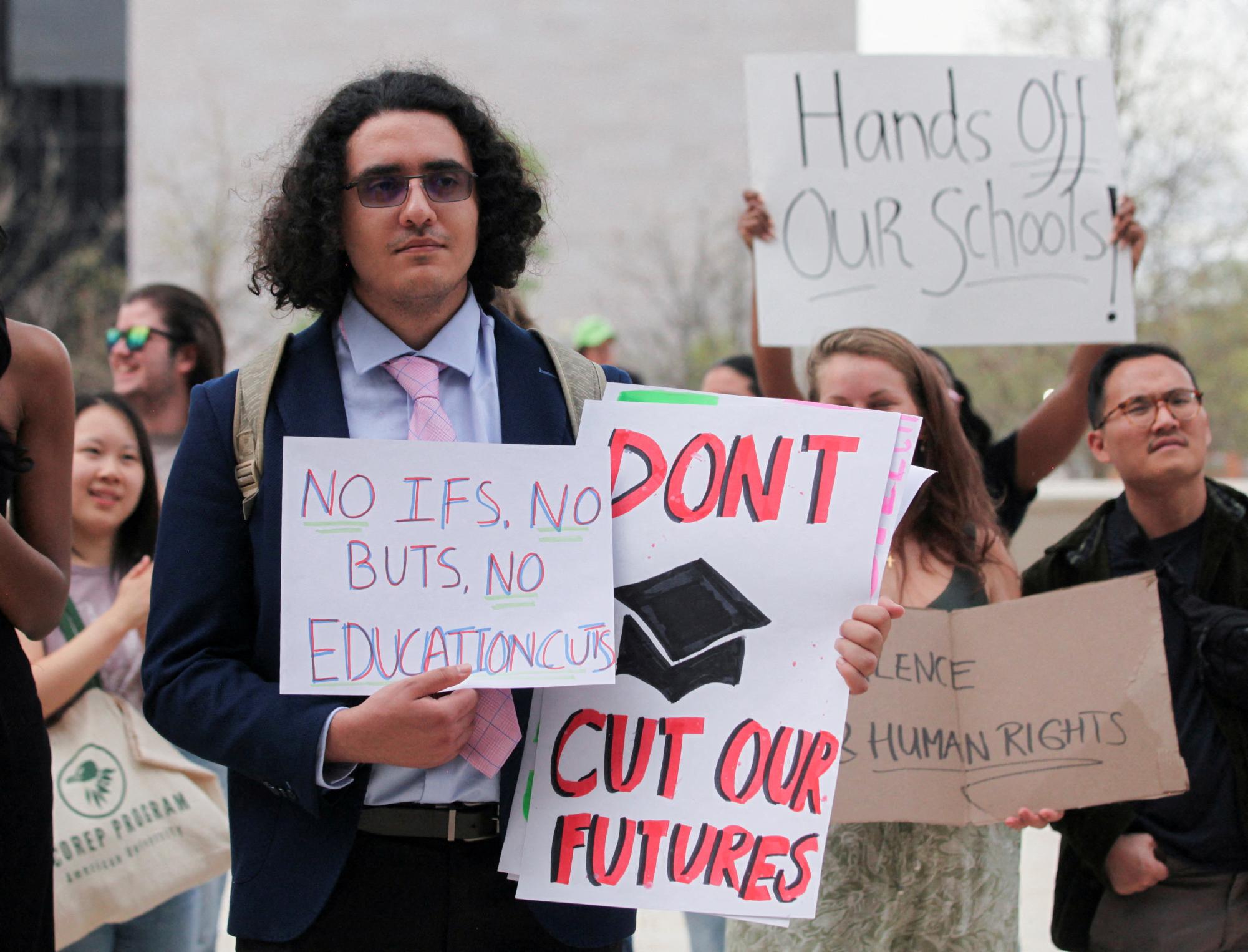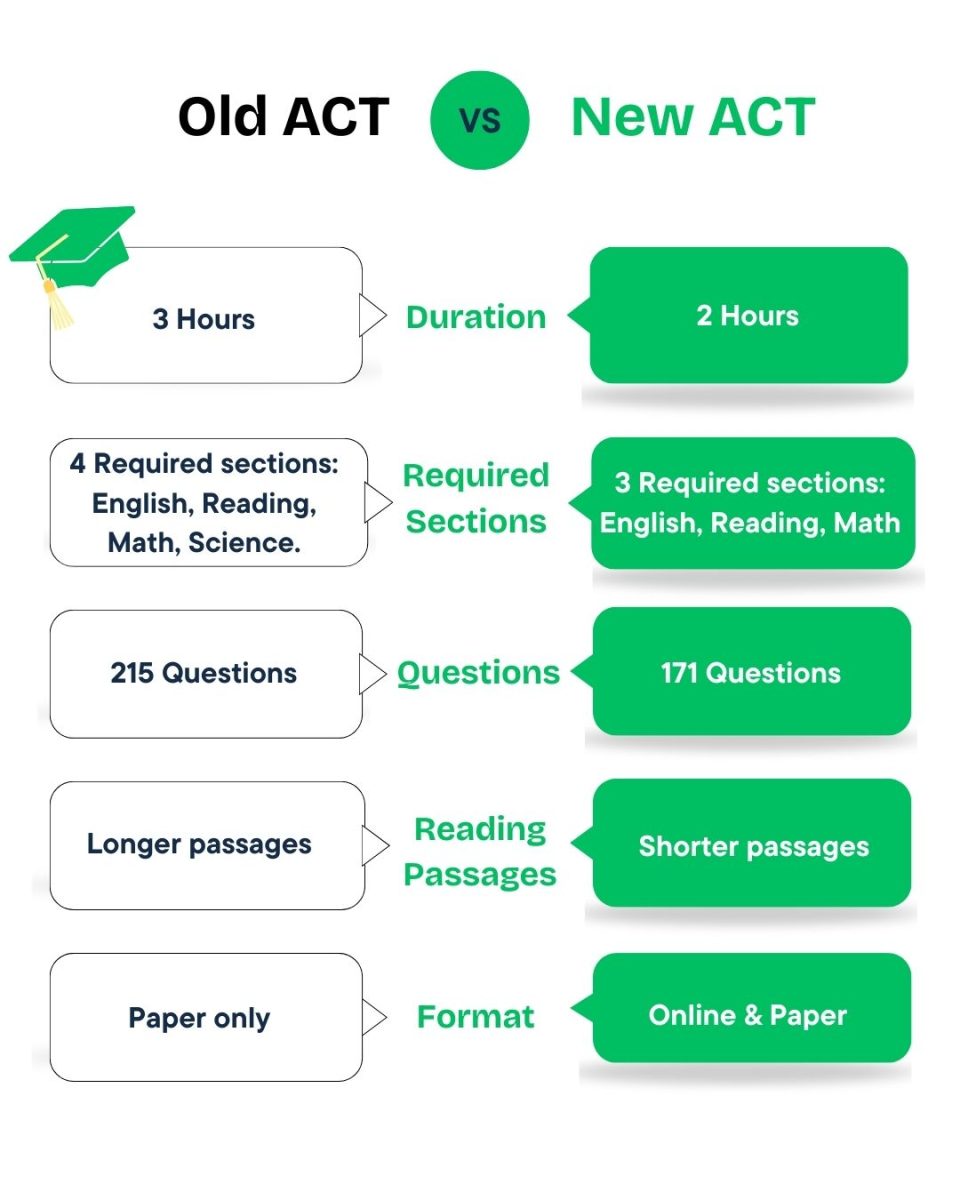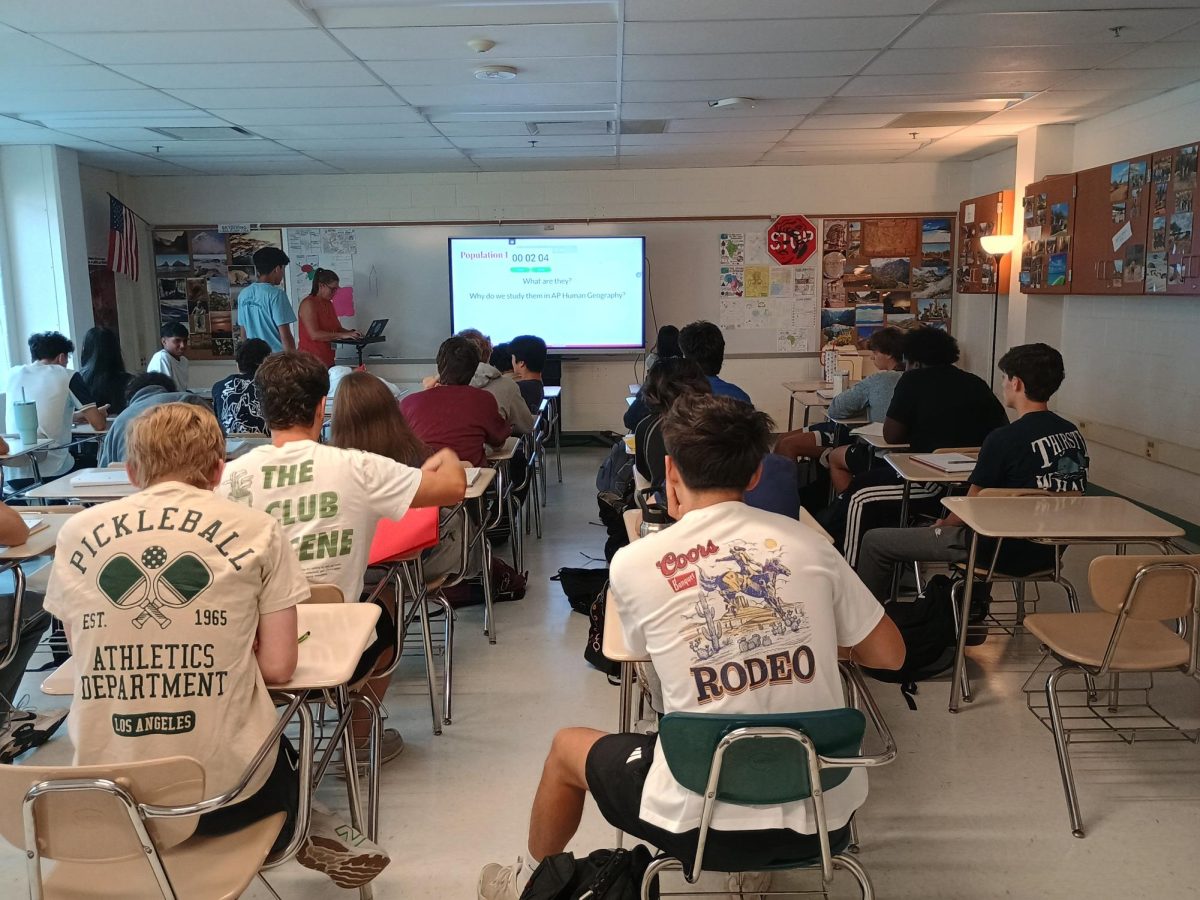The U.S. Department of Education has recently been subject to cuts, reductions in force and an executive order mandating its dismantling, prompting concerns about the downstream impacts on local school systems, including Montgomery County Public Schools.
Trump administration attacks Dept. of Ed.
Since President Donald Trump took office, the Education Department’s staff has halved in size due to mass layoffs and staff choosing to leave through retiring or resigning. When Trump came into office, the Education Department had 4133 employees; as of March 1, the number was down to 2183. The majority of cuts came on March 11, when approximately 1300 employees were informed that they had been laid off.
President Trump signed an executive order on March 20 aimed at dismantling and effectively closing the Education Department. Although only Congress can officially close the department, this order will have profound effects on its day-to-day and long-term functions.
According to a fact sheet released by the White House, the order “directs the Secretary of Education to take all necessary steps to facilitate the closure of the Department of Education and return education authority to the States, while continuing to ensure the effective and uninterrupted delivery of services, programs, and benefits on which Americans rely.”
The Secretary of Education, Linda McMahon, released a statement on March 20, saying that the order was “a significant step forward to give parents and states control over their children’s education” and went on to explain that “closing the Department does not mean cutting off funds from those who depend on them — we will continue to support K-12 students, students with special needs, college student borrowers, and others who rely on essential programs.”
Many programs that will potentially be targeted by this cut are focused on bridging gaps within the education system, pushing for equality of opportunity. Cutting back on these programs risks furthering educational disparities.
McMahon went on to list a series of the department’s “convictions,” including that “Taxpayer-funded education should refocus on meaningful learning in math, reading, science, and history — not divisive DEI programs and gender ideology.” Along with President Trump’s executive order banning transgender athletes from women’s school sports and the department’s recent meeting with “detransitioners and advocates” on “Detrans Awareness Day,” concerns have been raised amongst the LGBTQ+ community at large, particularly amongst transgender youth.
In the statement about this meeting, words such as transgender and gender transitions were put in quotes, and attendees were reported as having “shared their experiences regarding gender ideology and so-called ‘gender medicine.’”
One of the offices most affected by the layoffs is the Office for Civil Rights. According to NPR and FedScope, 568 people worked in the department as of this past September, and at least 240 employees were laid off on March 17. In addition to these layoffs, over half of the OCR’s field offices have been announced to be closing. The OCR, according to the department’s website, is responsible for “[ensuring] equal access to education and [promoting] educational excellence throughout the nation through vigorous enforcement of civil rights.”
The office enforces important civil rights laws such as Title VI of the Civil Rights Act of 1964, which prohibits discrimination on the basis of race, color, and national origin; Title IX of the Education Amendments of 1972, which prohibits discrimination on the basis of sex; Section 504 of the Rehabilitation Act of 1973, which prohibits discrimination on the basis of disability; and the Age Discrimination Act of 1975, which prohibits discrimination on the basis of age.
With the cuts to this office, there is a great deal of concern as to the continued enforcement of these acts nationwide. Due to these concerns, a federal lawsuit has been filed by two parents and the Council of Parent Attorneys and Advocates, a disability rights group.
For students, a great area of concern is the ramifications of these events on the Free Application for Federal Student Aid (FAFSA) and Pell grants. Although there is no indication that the FAFSA is at risk of being removed or replaced, there are questions about the ability of a much smaller Education Department to keep up with the millions of applications. If the department is formally closed, the oversight of FAFSA would be carried out by another department or government organization.
Pell grants are given to “undergraduate students who display exceptional financial need and have not earned a bachelor’s, graduate, or professional degree.” The maximum awarded through these grants, as of the 2025-2026 award year, is $7,395. Even prior to the dismantling of the Education Department, Pell grants were a subject of concern. According to the Congressional Budget Office’s January report, the program was expected to experience a $2.7 billion funding shortfall in 2025.
With over seven million students nationwide receiving these grants, this shortfall could be detrimental to their college educations, as well as those of potential future recipients. Additionally, with the potential closing of the Education Department, the running of this program would have to be delegated to another department or government organization in order for it not to be eliminated entirely.
MCPS effects
For MCPS, a reduction in federal funding could have widespread effects on the over 160,000 students in the school district. However, a substantial majority of MCPS’ revenue each year comes from state and local sources, while only a small percentage comes from the federal government and the Education Department.
In the fiscal year 2025, MCPS received approximately 3.4% of its revenue, totaling $112.8 million from the federal government, mostly consisting of Title I funding. The trend remains in the proposed Fiscal Year 2026 budget, with around 3%, or $107.3 million of funding coming from Washington of the $3.6 billion proposed budget.
However, uncertainty in whether this funding will come through leaves budget planners in limbo.
Long-term effects
In the long term, these budget cuts are also going to take away from post-high school preparation resources. Federal funding is utilized by states to ready students for their post-high school plans through college counseling, Advanced Placement (AP) support, dual enrollment and other Career and Technical Education (CTE) programs.
If funding for these programs is reduced across the country, there will be a decline in student enrollment in colleges as well as other post-secondary school programs.
Ultimately, this deficit in educational funding will impact students for the rest of their lives. Students who are less prepared for their future plans may face fewer job opportunities, due to their lack of experience from a young age.
The long-term ramifications of these cuts will be seen not only on an individual level but on a national scale. With lower quality education there will be fewer skilled workers, weaker local economies and more communities swimming in poverty. There will likely be changes seen in the strength of the workforce and the future of the United States as a whole.











